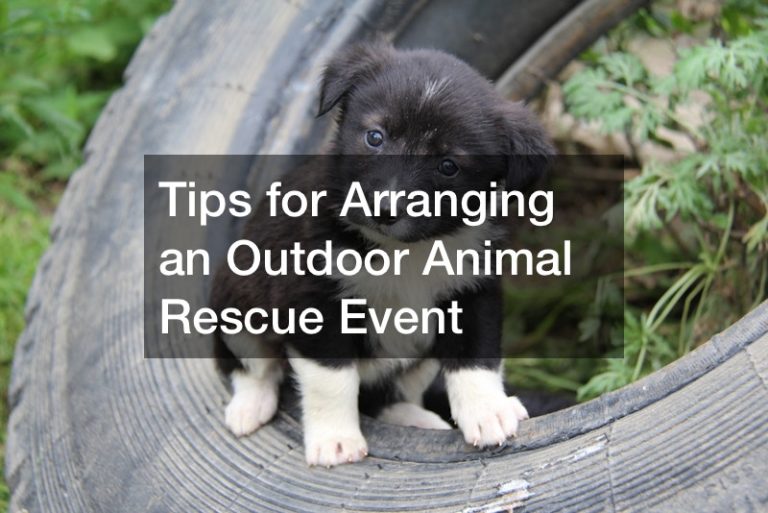

Childhood is a magical time. Often, people look back on their childhood with fondness and longing. As parents, we must provide opportunities for our children to make memories, learn responsibility, and mold the life-lessons that will carry them through to adulthood.
One way to tick all of those boxes is by letting your child raise a pet.
The decision to add a pet to your family isn’t one to take lightly. After all, this is a living creature with needs and emotions. So, what should you consider in preparation for your kids first pet?
Here are a few ideas.
Gauge your Child’s Abilities
This is an important step to take before gifting your child such a large responsibility. Their ability to care for a pet can help you find the right pet for your family as well as prepare you for the level of work you will personally need to take.
Ask yourself these questions:
- Does my child play roughly?
- Does my child understand commands like, “no,” or, “easy?”
- Can my child follow feeding, bathing, or grooming instructions?
If your kid likes to play rough, you might want to consider that when choosing the species and/or breed of your new pet. Similarly, your child’s ability to understand and follow commands and directions can help you to foresee how much supervision and direct care will be required of you.
Choose the Right Pet
As we mentioned, your child’s temperament and abilities will play a big role in choosing the right pet. However, there are other important factors to consider.
- The Size of Your Home/Yard
- Landlord Restrictions
- How Much Can You Afford to Spend on Pet Care?
- Allergies or Phobias in The Home
- How Much Attention Can you Give?
- Backup Care Plans
The Size of Your Home/Yard
While you don’t have to have 12 acres to provide a great home for a new pet, the size of your property can make a difference in their quality of life.
For instance, keeping a high-energy dog like a border collie in a small apartment might not be a great choice. Some pets, like horses and other large farm animals, legally require that you provide them with a large, specific amount of land.
Landlord Restrictions
Before choosing your kids first pet, you will need to check with your landlord to determine restrictions on animals. While some landlords may not allow cats, dogs, or rodents on your property, they may be fine with fish, reptiles, or birds.
How Much Can You Afford to Spend on Pet Care?
Pet care supplies can be expensive. Their food, toys, accessories, and vet care all add up over a year. As members of your family, it is your responsibility to ensure all their needs are met.
That’s why it is important to consider how much money you are capable of spending on your pet. Before purchasing or adopting an animal, call your local veterinary clinic to discuss prices of general care like vaccines. Also ask about the price of pet insurance, which can help ease the burden of a sudden health issue in your pet.
Take some time to look through online care guides for your selected pet and see how much their general care costs.
Will your pet need to eat a specialty food only sold an hour from your home?
Does their cage require a specific substrate that needs to be replaced every week?
How much do grooming supplies or visits to a grooming specialist cost?
Taking this kind of information into account can prevent your from choosing an animal for your kids first pet that you cannot afford, long term.
Allergies or Phobias in The Home
It might seem obvious that your kids first pet shouldn’t be one they are allergic to, but often, parent’s don’t know if their child has a pet allergy due to lack of previous exposure.
If you are concerned about the possibility of an allergic reaction, contemplate talking to your child’s doctor about conducting an allergy test before bringing your new pet home.
How much Attention Can you Give?
Many people envision their kids first pet as a cute little kitty or an attentive k9 companion; however, these animals require a large devotion of time.
An important part of animal wellness is enrichment and positive stimulation. For some animals, this comes through time spent directly with the family. Those who have no time to play with their pets may not be the right owners for a dog or other pack animal.
That doesn’t mean there aren’t great pet options. Many rodents, reptiles, birds and other pets enjoy being handled but also require time without human interaction.
Backup Care Plans
This is an important part of pet ownership that many people don’t think about. What will you do with your pet while you are gone?
Sure, pet boarding might be an option if you have a dog or cat. However, most pet boarding companies aren’t so keen on snakes and other alternative animals.
Call around to friends and family and ask, “if I get this pet, would you be willing to care for it during an emergency.” Knowing you have backup for your pet’s care can help comfort you in the decision to add them to your family.
Focus on Education
One of the greatest aspects of your kids first pet, is all the wonderful learning experiences they will have. Don’t shy away from letting your child participate in parts of animal care.
Maybe your child can help feed and water your pet, clean their cage or bedding, help groom them, tag along to the vet clinic, and more. There really are endless opportunities to help your child learn responsibility through pet ownership.

Get Your Pet Professionally Trained
It is easy to focus so heavily on how your child will behave around your new pet, that you may forget that the pet needs to behave around your child as well. Many parents choose to bring a young animal into the home so the pet and child can grow together.
Whether you choose a young or old pet, often time that pet will require training to ensure they don’t create havoc in your home. Professional pet trainers can help ensure your pet acts in a way that is predictable and safe while around your child, which is priceless.
For help with behavior around other pets, you can take your pet to group activities or boarding centers where they can interact with other animals. Doggy daycare, for instance, is a fantastic way to get your pup used to other animals, which can curb aggression or fear down the road.
Dealing With Death
It is an unfortunate fact of life that pets don’t live forever. When you decide to bring home your kids’ first pet, it is only a matter of time before they experience the difficult feeling of loss. A pet’s death is often a child’s first experience with losing a loved one, and it may be difficult for both you and your child to handle.
Breaking the News
You may feel like this is the hardest moment of all, telling your child their beloved friend is gone. Remember, always choose to tell the truth to your child. Sugar-coating their loss with lies will keep them from being able to properly grieve, which is important for their emotional healing.
Depending on your child’s age and maturity, you may choose to include or omit details as necessary.
A four-year-old doesn’t need to hear the gory details of their pet’s death, but it is appropriate to tell them that their pet got badly hurt and the vets tried all the animal treatment they could to save them.
Letting Your Child Grieve
As your child grieves, remind them that you are there if they need comfort. However, it is completely natural for kids to want to grieve alone.
They might draw pictures of their dead pet, ask morbid questions, or act like they don’t care. These are all normal behaviors. Kids usually don’t have experience with working through grief, and it is appropriate for them to feel all kinds of emotions.
The best thing you can do is refuse to hide your own grief. Let them see that you are sad and that you miss the animal. Your child will use your healthy grieving as a cue for how to work through their own emotions.
Help Your Child Move On
Moving on doesn’t mean running out to replace your child’s goldfish or telling them to stop being sad.
Instead, try hanging a photo or drawing of the pet up someplace special and let your child know they can look at the picture whenever they feel sad, or miss your pet.
This, and other showings of memorial for the loss, are fantastic ways to help your child reach closure.

General Pet Care Tips
Nearly 85 million US families own a pet, which is a huge increase from just 30 years ago. This increase is reflected in the pet purchasing market, where you can pick some really interesting animals to add to your family.
Once you have prepared for owning a pet in general, it is important to prepare for the specific pet and its needs. here are some general care tips you might find useful.

Cats
Cat care can vary based on the personality of your cat, but some things are considered universal.
Your kitty will need a litter box that is scooped daily (change the litter weekly or according to package directions). Additionally, your friend will need toys and enrichment activities like a scratching post or cat tower.
These types of activities help your cat to entertain themselves and satisfy natural urges to climb, sharpen their claws, and hunt. Keeping these items in the house can save you the trouble of torn up furniture and door-frames, which cats often use to satisfy their clawing needs.
Many cats also enjoy a soft cat bed, breakaway collar, and plenty of hiding spaces (try a cardboard box).

Dogs
Many people choose a dog for their kids first pet, which is completely understandable. The creatures are loyal, sweet, cute, and easy to train.
Your dog’s wants and needs might vary slightly based on their breed or size, but here are a few suggestions.
Get an appropriately sized crate and bed for sleep training purposes. Consider a raised food and water bowl for taller dogs. Appropriately sized toys, bones, and ropes are great ways to help your dog work out their energy.
Get your dog a reflective collar with a tag, and consider having them chipped in case they run away from home or get lost. You may also need to think about doggy day care if you don’t want them home alone while you’re at work and your child is at school.
Dogs of all breeds require grooming, but that may vary from occasional bathing to daily brushing and nail trims.

Rabbits
Rabbits can be fantastic pets. Some breeds of rabbit are known to easily litter box train and can be let loose in the house. Others spend their whole lives in a cage, but there are ways to give them the best life possible.
Provide enrichment material like chew-safe logs, hiding areas, tunnels, toys, and live plants. Consider including heating or cooling devices to regulate your bunny’s temperature – rabbits are particularly susceptible to overheating.
Consider taking your rabbit’s cage outside during nice weather, but remember to keep your them away from predators like dogs, cats, large birds, and raccoons.

Reptiles/Amphibians
Reptiles and amphibians have become increasingly popular among pet owners, and are even commonly brought home as a kids first pet.
There are a few things to keep in mind about these cool creatures’ needs.
The type of cage, lighting, substrate, and enrichment toys will vary depending on the exact animal you choose. Luckily, the internet is filled with care guides for any animal you can imagine, which can help you to build a great cage setup before purchasing the animal.
It is important to remember that veterinary care for reptiles and amphibians is often difficult to find. You will want to check if your local vets are capable of caring for your new pet before a problem arises.
Most reptiles and amphibians do not like to be handled frequently, so consider your child’s want for physical pet interaction before purchasing.
See Your Child Blossom
You will be amazed at how your kids first pet helps your child’s personality bloom. There is something about the bond animals and children create that sparks endless growth and learning.
Welcoming your kids first pet might teach responsibility or it may simply provide your child with a furry shoulder to cry on when they need it. Either way, you will see just how magical a pet can be to you and your kids.


